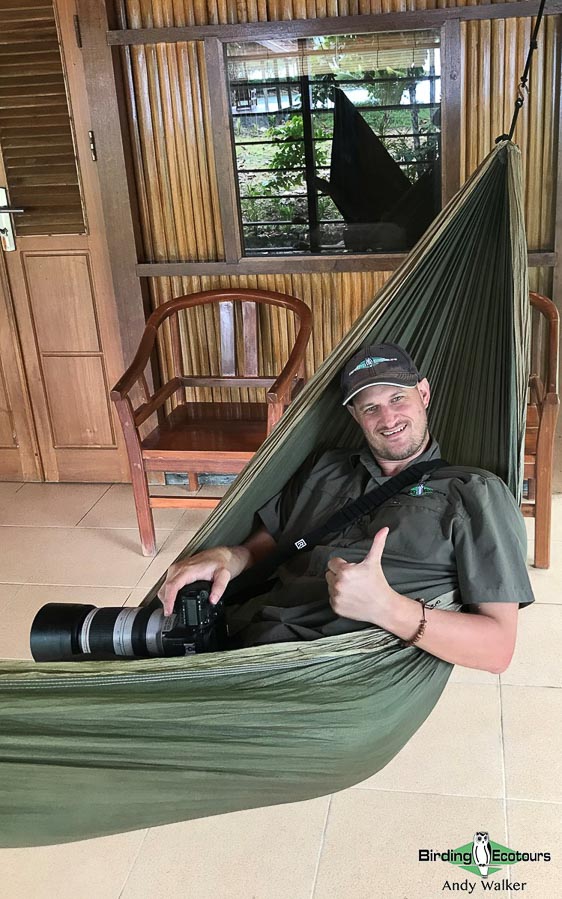Go to All Blogs | Birding Blogs | Birding Asia Blogs | Sulawesi and Halmahera Birding Tours | Indonesia Birding Tours | All our birding tours
Andy Walker reports from Halmahera.
After a few days birding in northern Sulawesi (at the incredible lowland site of Tangkoko National Park and nearby, higher-elevation Gunung Mahawu – you can read all about that in this blog post here), we decided to take the short flight from Manado in northern Sulawesi to the volcanic island of Ternate – this place is literally one huge forest-covered volcano with a large amount of urban development on the more gentle slopes going down to the coast.
Ternate is in the North Molucca (or North Maluku) islands and it is here that Alfred Russel Wallace lived – you can visit his houses here if you’d like, some information about this famous British naturalist is provided in the Sulawesi blog post linked to above.
From Ternate we took a speedboat to Sofifi, the capital city (or more accurately, village!) on the island of Halmahera. Halmahera was formerly known as Jilolo, Gilolo, or Jailolo and is the largest of the North Molucca islands and is a similar shape to Sulawesi, but is much smaller (though it is still the sixth-largest island in Indonesia).
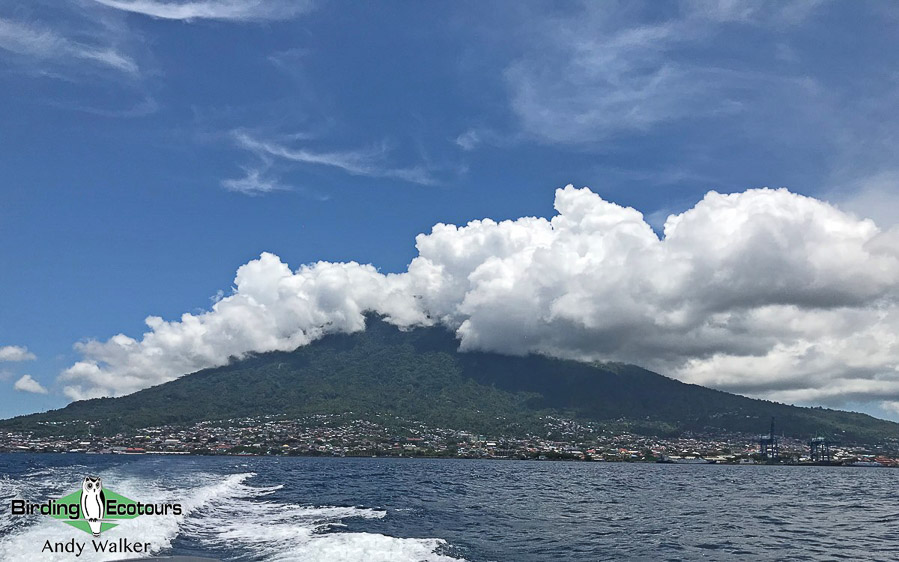 The view out the back of the speedboat as we departed Ternate for Sofifi.
The view out the back of the speedboat as we departed Ternate for Sofifi.
Halmahera has a bird list of 327 species following International Ornithological Congress (IOC) taxonomy in October 2020, with six of these species being endemic to the island and a further almost 60 species endemic to the region, so it is an important stop for world birders. The feel of this island is much more Australian than Asian and there are some truly jaw-dropping and exciting species to look for. The forest and birding here reminded me hugely of being in the amazing West Papua region, which isn’t probably all that surprising given it’s not that far away.
In July each year we have a Sulawesi and Halmahera birding tour and I’m lucky enough to lead this trip. We have an excellent local guide for the stakeout species, and it is always a highlight on my guiding calendar. There are some staggering birds possible on the island. Everyone is familiar with the gorgeous birds-of-paradise of New Guinea (see this blog post I recently put together) but Halmahera has two species of this incredible family too. Furthermore, if like me, you are a fan of pittas then you really do have to add this to your ‘need to go to’ places. Kingfishers too are very well represented (“regular” kingfishers and “paradise” kingfishers), as too are pigeons, fruit doves, and an assortment of colorful parrots. There are also several really interesting nightbirds present on the island. In addition to the birds, the snorkeling and scuba-diving around Halmahera is excellent, we stay at a dive resort while here, so there’s ample opportunity for these activities.
My choice of accommodation on Halmahera was straightforward, Weda Dive Resort. After our speedboat docked in Sofifi we jumped into our 4×4 and drove across to the resort. The drive took several hours as we took it fairly slowly, stopping to look at one or two species along the way, such as Moluccan Starling, Blyth’s Hornbill, Spangled (Halmahera) Drongo, Willie Wagtail (which is actually a fantail), Grey-headed Fruit Dove, Brahminy Kite, and one of the best, Blue-and-white Kingfisher.
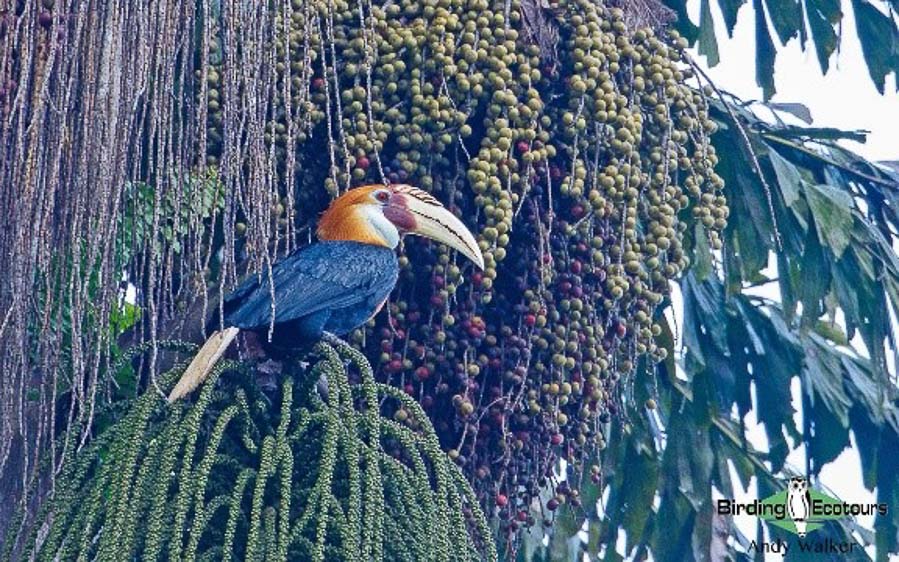
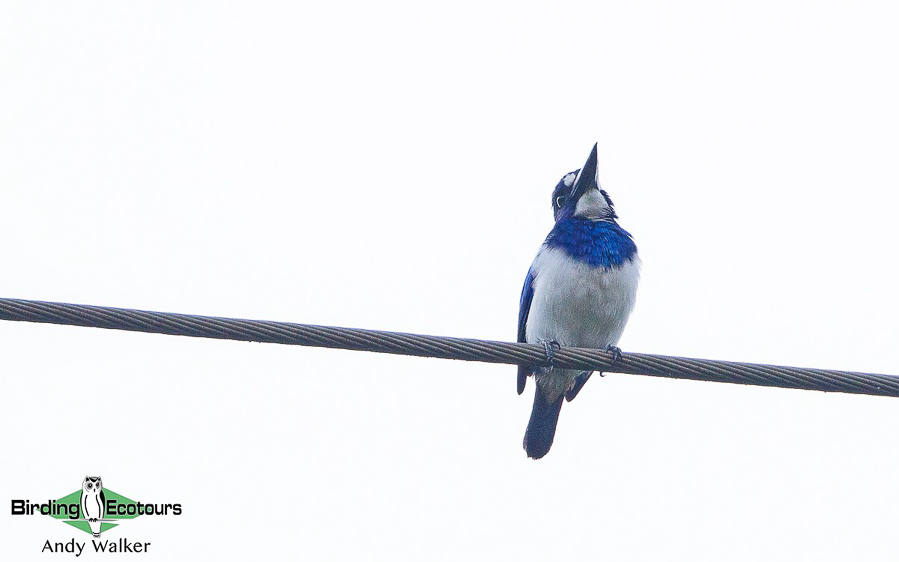
On arrival at the resort, just in time for sundown, we enjoyed a fresh coconut drink and relaxed in the hammocks outside our comfortable beachside rooms – very comfortable considering where we were in the world! After some excellent home-cooked food, which was a bit of a feast really, we had an early night as the following morning promised to be an exciting one (with an early start).
All too soon it was time to get up. After a quick breakfast, and still in darkness we hopped into the waiting 4x4s and drove a short distance to a patch of forest owned by the resort. We put on our headtorches and commenced a short hike into the darkness along a forest trail. Fairly quickly it started getting light enough to lose the torches and the forest started to come alive with beautiful, interesting, then plain nasty squarks! It was clear we were hearing a dawn chorus punctuated by calls of a bird-of-paradise, our first target of the morning!
We carefully settled into place and patiently waited, though the wait was not for long. Suddenly, there before our very eyes, was one of our most-wanted birds of the trip – the Standardwing. This species has been known as Wallace’s Standardwing (after Alfred Russel Wallace – no surprise there) as well as Standardwing Bird-of-paradise, and various combinations of the above. This is a species that, in all honesty, does not look great in the field guides, but don’t let that fool you. This bird is really something to behold. The male has a stunning, glowing bluish-green breast shield and four white wing-standards that float about around the bird. When a female is present the display really gets going as he jumps around between song perches making some typically raucous bird-of-paradise noises and flashing the breast shield and wing-standards!
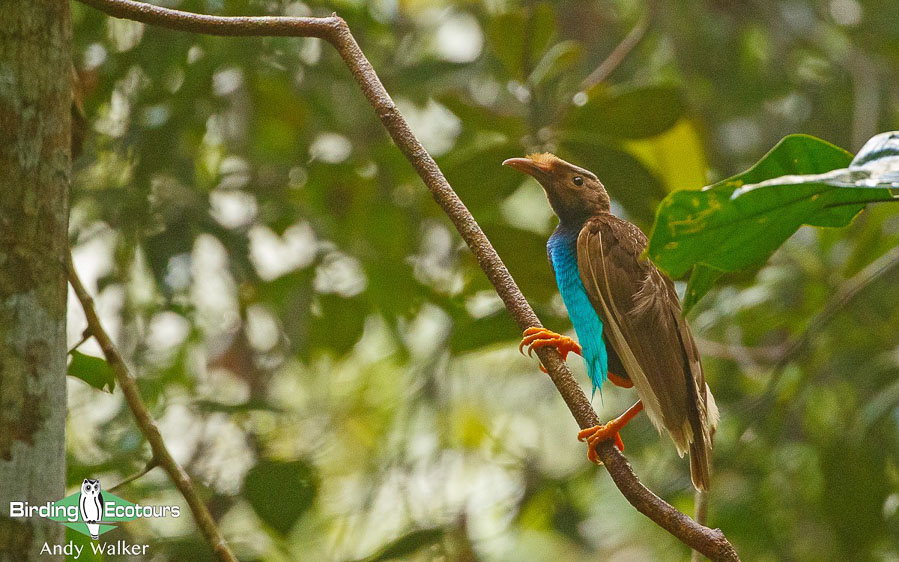
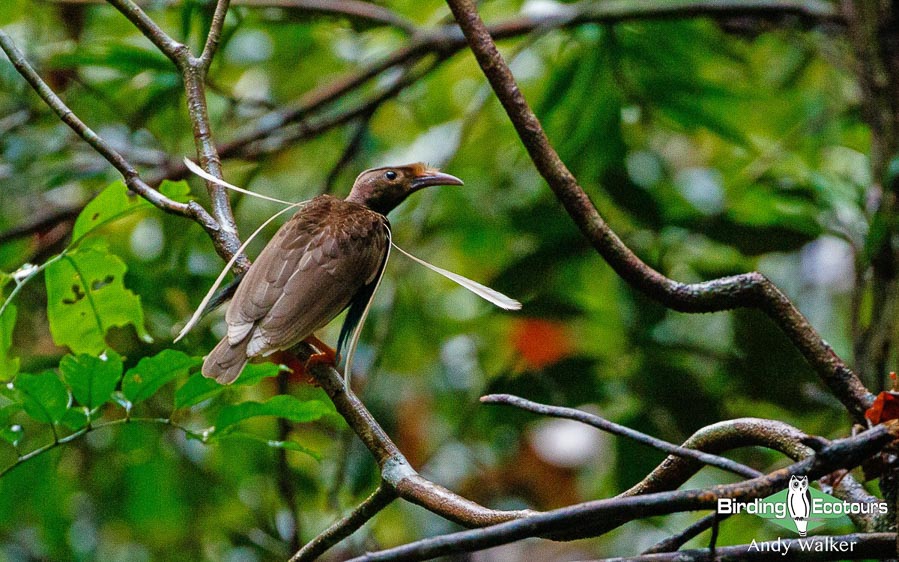
We watched these birds for about an hour, paying hardly any attention to the other birds that were passing through the forest or above the forest, such as the various parrot and pigeons, though Dusky-brown (Halmahera) Oriole and White-streaked (Halmahera) Friarbird did drop in close enough that we couldn’t do anything but see them! But in all honesty, the display of the Standardwing was just mesmerizing and amazing to watch, there is a reason why they are called birds-of-paradise after all!
Birds-of-paradise are one thing, and an amazing family, but they do not (nor any other family in my opinion) come close to pittas. There are two highly sought-after pittas on Halmahera and our next target was going to be one of these… suddenly my interest was piqued! I knew it was on the cards as we’d heard two calling as part of the dawn chorus a few hours earlier but there is something special about tracking (chasing) after a pitta, it really gets the blood and adrenalin going. As we walked through the forest it started calling again, we followed the sound, momentarily getting distracted by a small Halmahera Python in the trail. We got into a sheltered and hidden spot in the forest close to where the sound was emanating from and after a bit of whistling we could see this huge white ball slowly bouncing through the forest and down the slope towards us. Most of the time it was obscured but then suddenly after one more bounce there it stood, right out in the middle of a clearing, glowing against the almost-pitch-black forest floor – the stunning Ivory-breasted Pitta – WOW! Not just any old pitta, this is the largest pitta of them all (along with Giant Pitta, though Ivory-breasted Pitta actually averages larger), with a crazy white breast, which makes it even more impressive when this thing just simply vanishes – how do you lose a huge white bird in a black forest floor…? We spent a good 30 minutes or more watching this bird, there was a second male calling nearby so I think we were at the meeting point of their territories. This bird is often high in the trees, odd for a pitta, but we were not complaining at seeing it hopping along the ground at close range. Certainly, one of those magical birding moments to live in the memory for a lifetime.
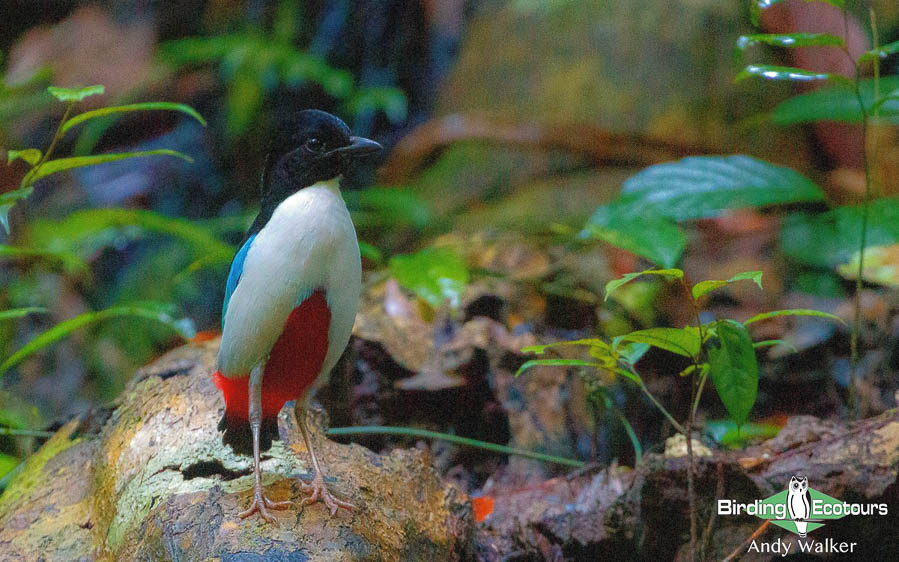
After these amazing encounters it was time to venture a bit further afield so we jumped into the 4x4s and made our way along the roads of the area where we could see more of the edge of the forest, this proved an excellent choice and we found the second bird-of-paradise on the island, (Halmahera) Paradise-crow. The individuals we saw showed well but always briefly and I wasn’t quick enough to grab a shot of those. We did also find several other great birds, such as Sombre Kingfisher, Long-billed Crow, Halmahera Flowerpecker, Cream-throated (Halmahera) White-eye, Grey-headed Fruit Dove, Variable Goshawk, Halmahera Swiftlet, Northern (Halmahera) Golden Bulbul, Moluccan Cuckooshrike, and the gorgeous Rufous-bellied Triller.
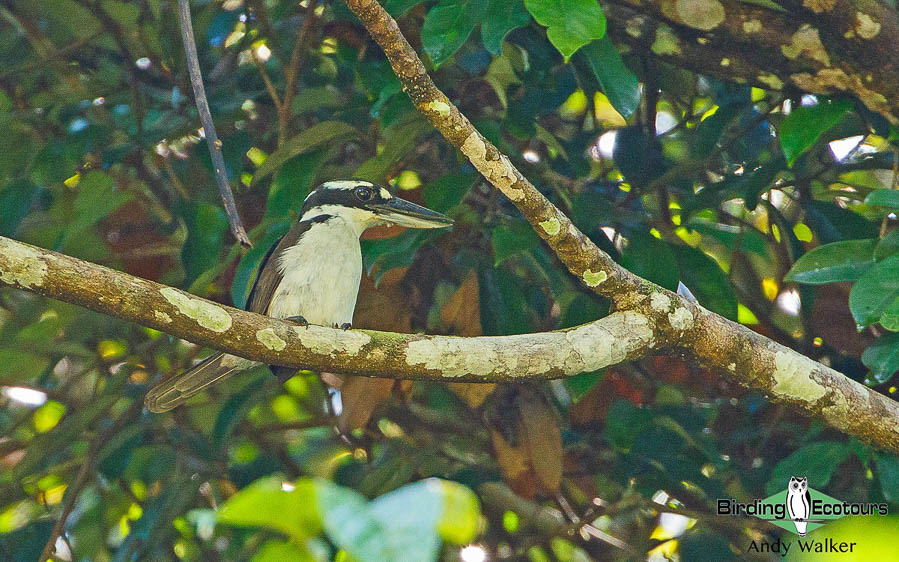
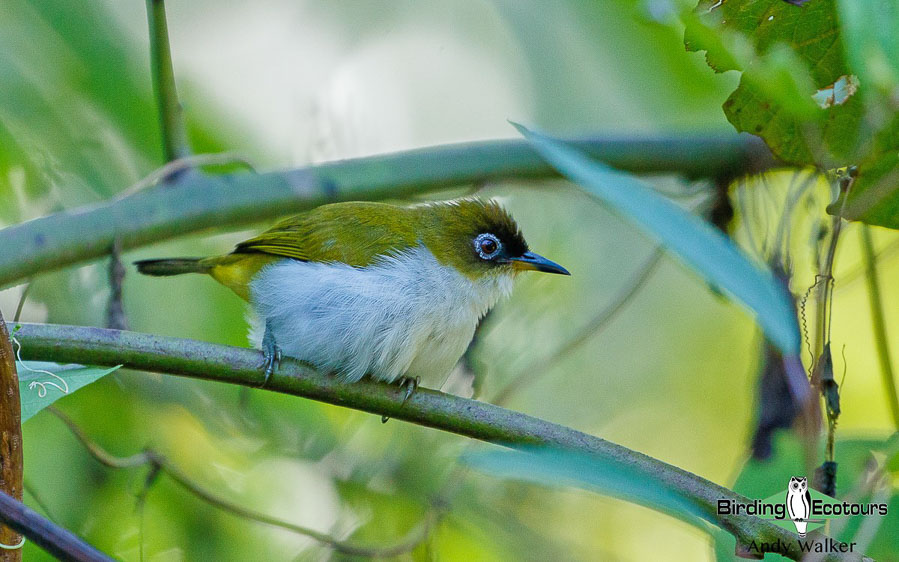
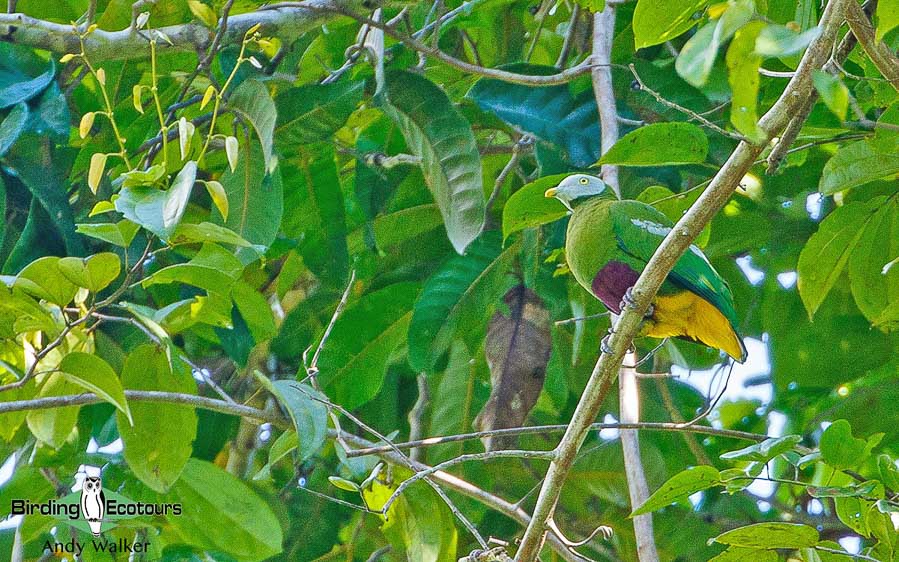
What a phenomenal morning’s birding, just amazing! The afternoon was spent relaxing around the resort grounds with a bit of swimming and exploring the underwater life, always fun. Also, the hammocks in the resort are great for drifting off to sleep while listening to the gently breaking waves in the bay!
The following morning we were back out in the forest looking for one of my other major targets on the island. This one took some patience, but after a while we were rewarded with some excellent views of a very vocal North Moluccan Pitta, another beautiful bird, previously part of the ‘Red-bellied Pitta’ complex before a massive split, check out the Sula Pitta experience I had back in February 2020, another from the split.
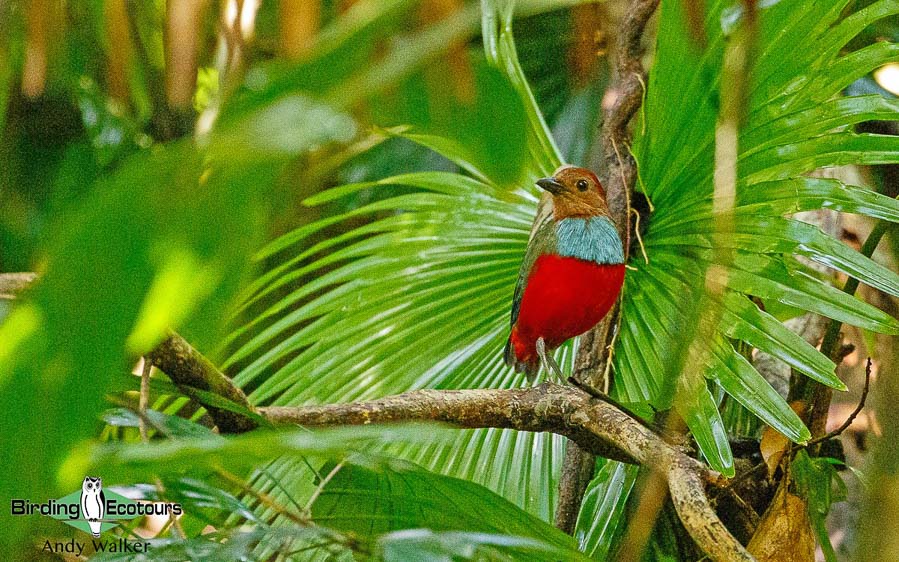
We then spent quite a while hoping that Invisible Rail would show, but true to its name, that didn’t happen, so we had to just settle for hearing it! There was quite a lot of water in the swampy forest so the chances of this bird during my visit in September were not as good as in July, we were just very limited in where we could walk which lowered our chances massively. However, here we did find White (Umbrella) Cockatoo, Common Paradise Kingfisher, Cinnamon-bellied Imperial Pigeon, Goliath Coucal, Blyth’s Hornbill, Red-flanked Lorikeet, Azure Dollarbird, Oriental Dollarbird, Sultan’s Cuckoo-Dove, Pied Imperial Pigeon, Shining Flycatcher, Moluccan Hanging Parrot, Sacred Kingfisher, Moustached Treeswift, and Gurney’s Eagle. A couple more (Halmahera) Paradise-crows were also well-received, though not at all photogenic!
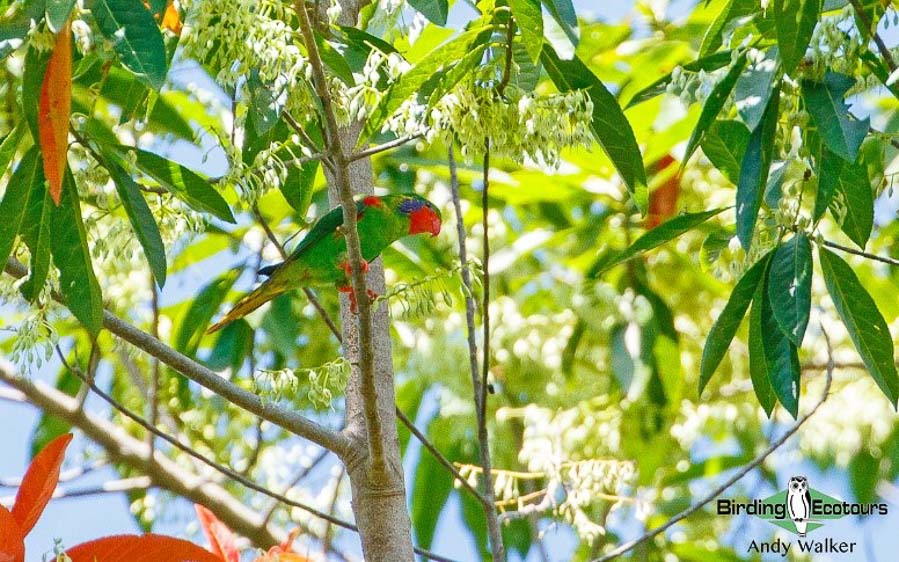
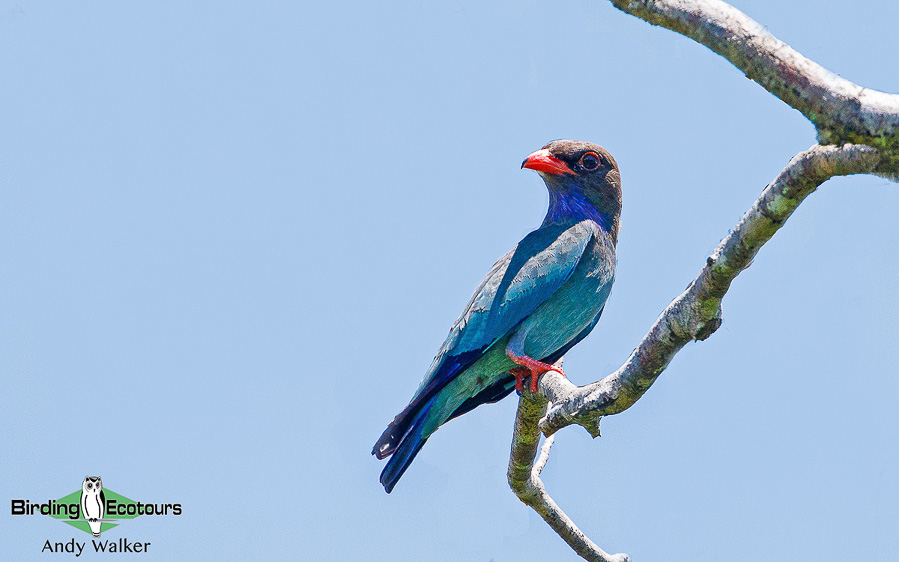
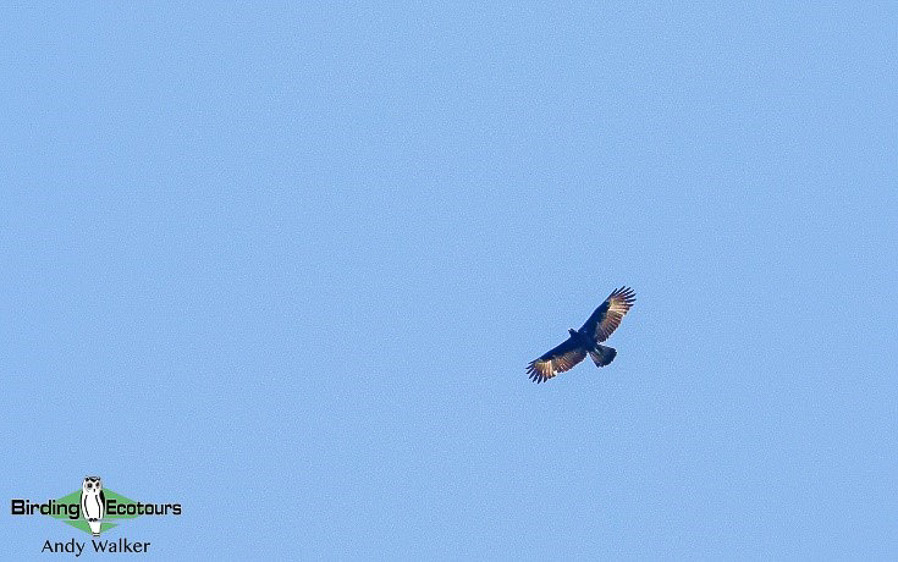
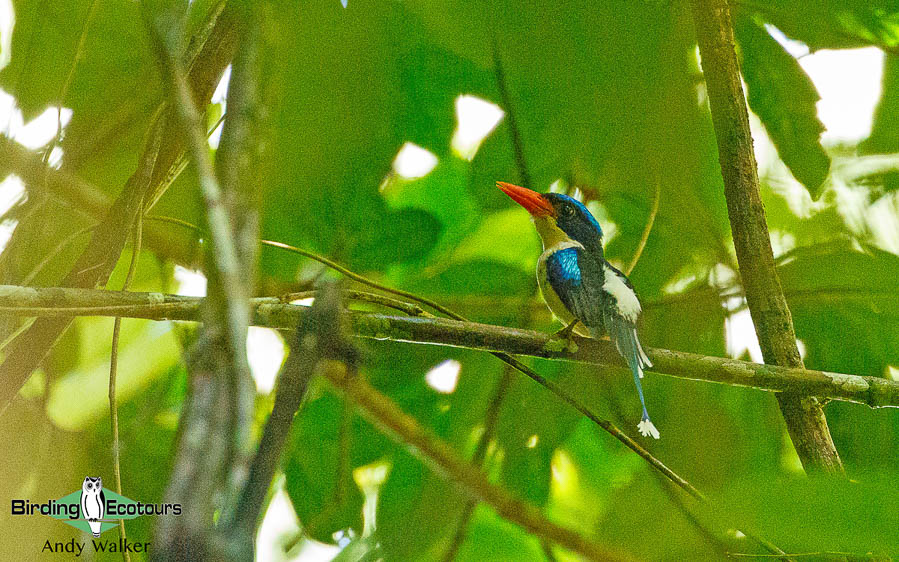
The afternoon was spent relaxing and swimming at the resort, this also allowed some great views of the resident pair of Beach Kingfishers as well as several other species such as the tiny Blue-capped Fruit Dove, Rusty-breasted Cuckoo, Willie Wagtail, White-bellied Cuckooshrike, and Common Sandpiper.
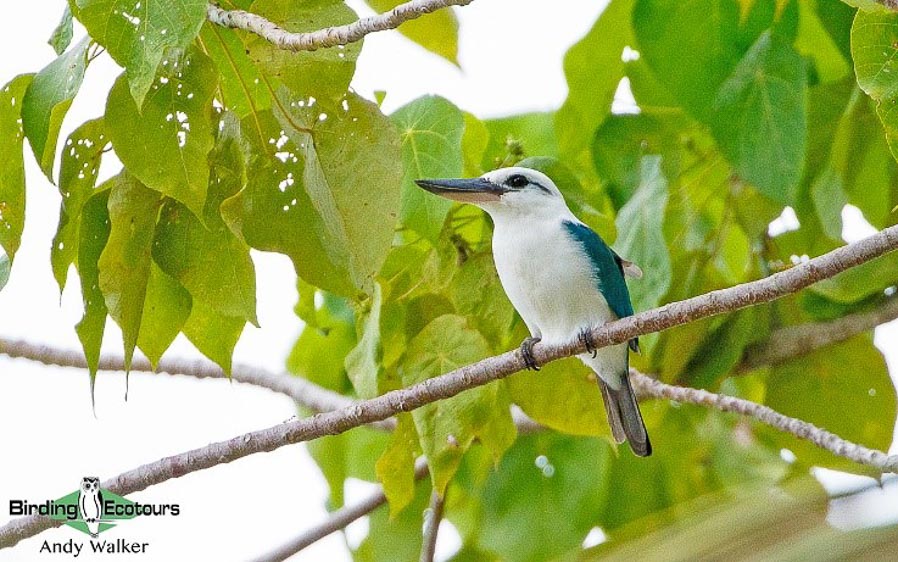
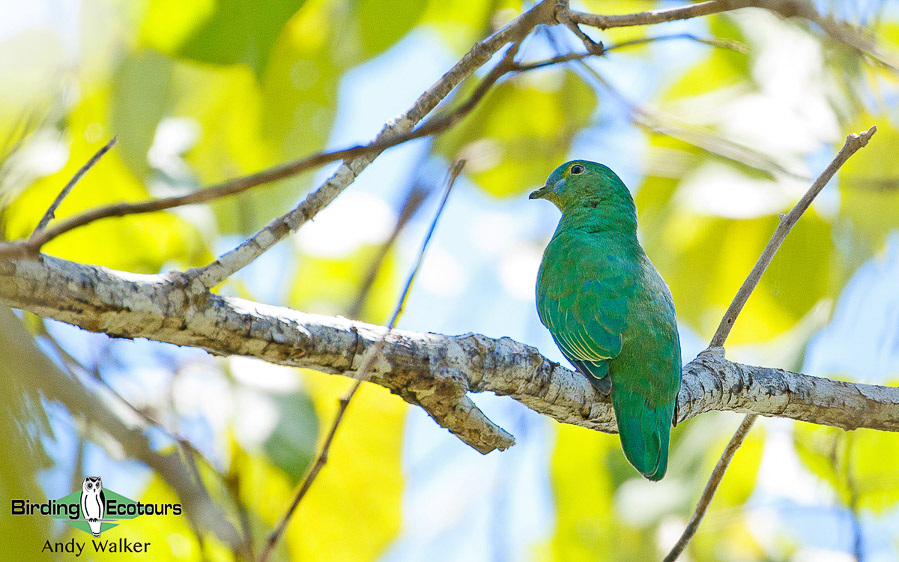
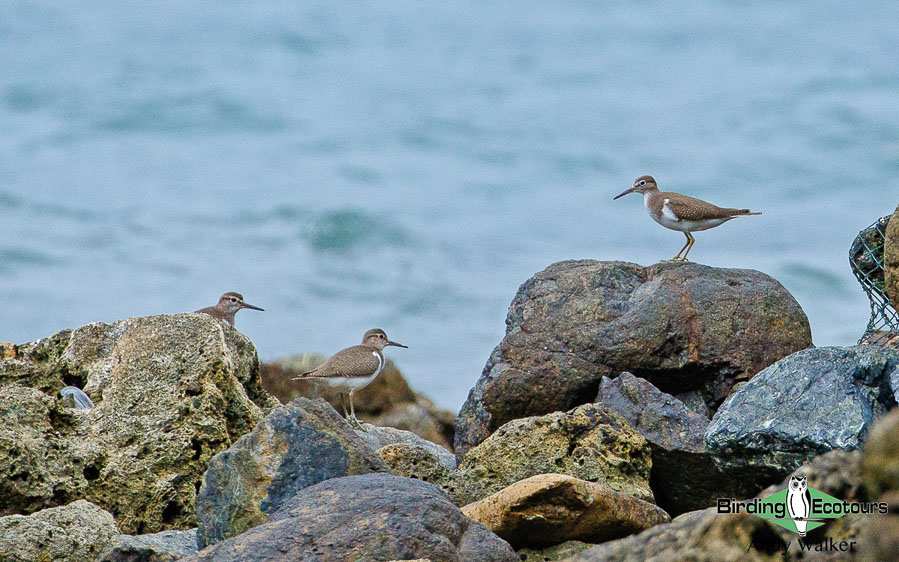
Ahead of dinner we had a one-hour birding session near the resort at dusk, where we found Moluccan Scops Owl, Halmahera Boobook, Moluccan Owlet-nightjar, and Large-tailed Nightjar – it was pretty amazing, however the rain came down pretty hard all of a sudden and put a stop to the birding before all were photographed, nevertheless a fun evening, before yet more amazing food!
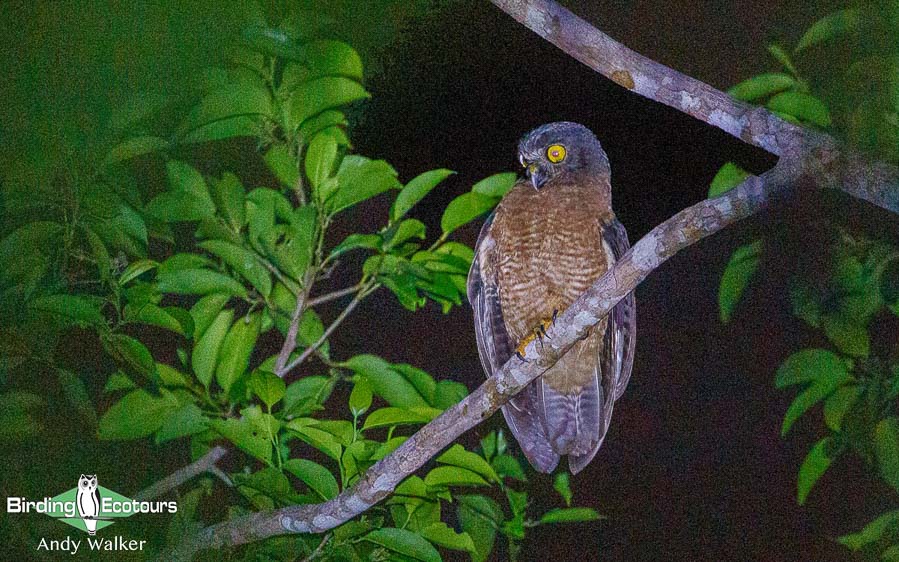
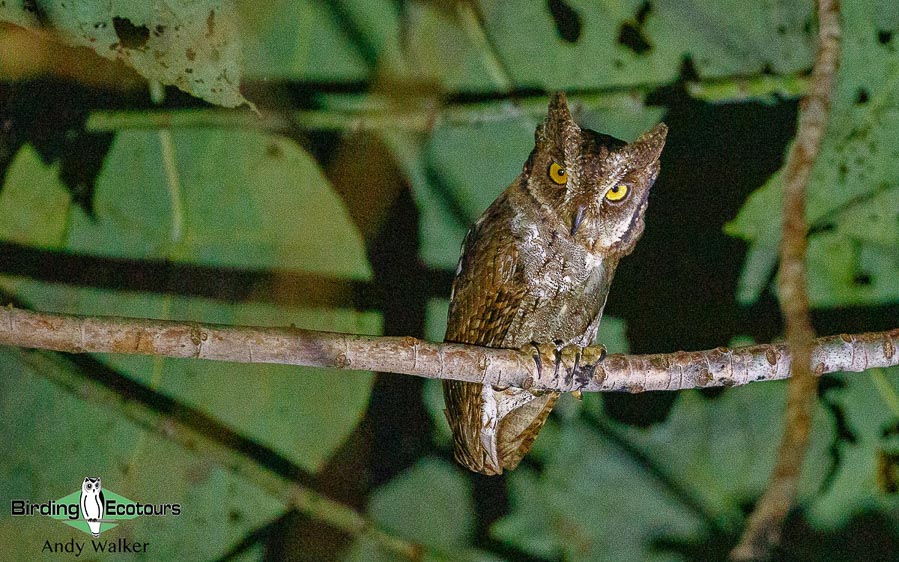
It was only a short trip to Halmahera but the birding had been excellent, the accommodation and food perfect, the views of the forest and the coast to-die-for and the weather had generally played ball, we’d had a couple of thunderstorms but these didn’t affect the birding too much as they were in the afternoon or evening. Unfortunately, and all too soon, it was time to jump back into the 4x4s and drive back to Sofifi, from where we grabbed a speedboat across to Ternate and then caught our flights back to Denpasar, Bali. It had been an incredible trip and I can’t wait for July 2021 to roll around so I can go back to this wonderful place once more and share these amazing birds with others….
Our 2021 Sulawesi and Halmahera tour is a guaranteed departure with a few places left at the time of writing in October 2020, so why not take a look at our newly updated detailed itinerary here and consider joining us. I’m sure you will have a great time and I’d love to show you the above birds, and more!
